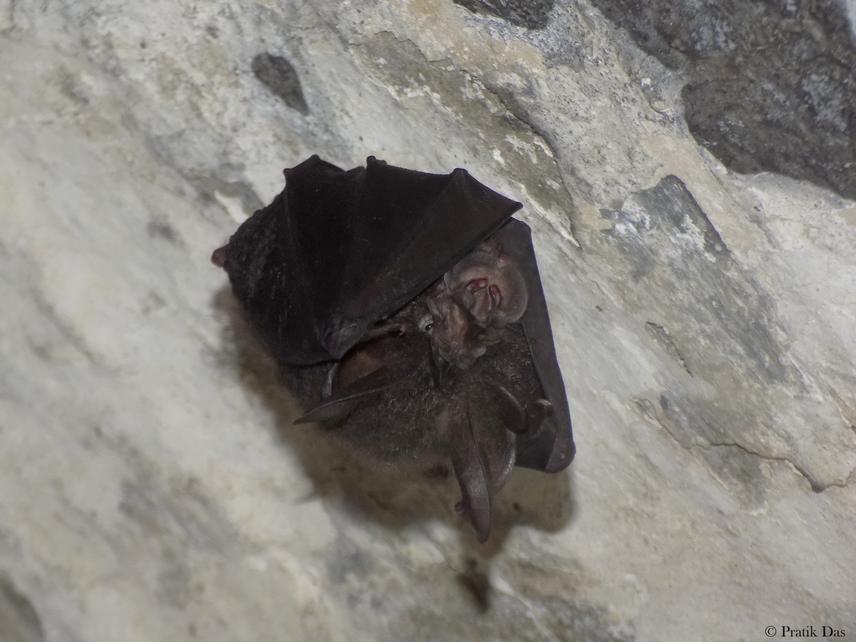Pratik Das
Bats are ubiquitous, diverse mammals with 1447 species, of which 87% echolocate, and 25% of the total are threatened. Their lingering enigma and association with diseases worsen this situation. Landscape modification or land-use change is the most frequent threat in IUCN bat species assessments. Given the paucity of paleotropical studies in days of rapid urbanization and agricultural expansion, more research is urgently needed, particularly those incorporating acoustic techniques. This urgency becomes most intense in underexplored Northeast India, which has two biodiversity hotspots, around 90 bat species and is undergoing fast land conversion.

A Rhinolophus sp. roosting inside a defunct railway tunnel. The tunnel passes through the tropical forests of Borail Hills. The picture was taken early winter during my site selection survey. © P.C. Pratik Das.
The project site spreads across the lowlands of eastern Northeast India (27.0938° to 27.8282° N and 94.8752° to 96.9908° E), which lies within the Eastern Himalaya biodiversity hotspot. The project area encompasses urban centres like Dibrugarh, Tinsukia, and Duliajan, a rural mosaic of crop fields and tea estates, alongside natural areas, including Namdapha and Dehing Patkai forest reserves. It features plains and low-elevation hills (<1000 m), with a humid subtropical climate. Forests include tropical wet evergreen and semi-evergreen types.
This project uncovers the effect of landscape modification on the echolocating assemblage by observing changes in species diversity (richness and evenness) at different modification levels and species turnover (beta diversity) between the levels. The three levels are Urban, Rural, and Natural, where urban areas represent the highest level of modification and natural areas represent the least. A section of our work will also inform if species-wise bat activity varies at different modification levels. Activity here corresponds to the degree of habitat utilization and is often used as a proxy of abundance. Each bat species has its unique echolocation call features and thus represents a sonotype. Hence, sonotype can be used as a proxy for species. Implementing Passive Acoustic Monitoring (PAM) techniques and the concept of sonotypes I achieve non-invasive observations and greater sampling reach. However, acoustic sampling can only function in its entirety when a regional echolocation call library is available. Therefore, to associate sonotypes with their corresponding bat species, I propose to build one for my study area. All these findings will boost future research, highlight prevailing conservation issues and provide insights into developing solutions.
The project also includes outreach programmes, where we will try to raise awareness, rectify misconceptions, and induce positive attitudes towards bats.